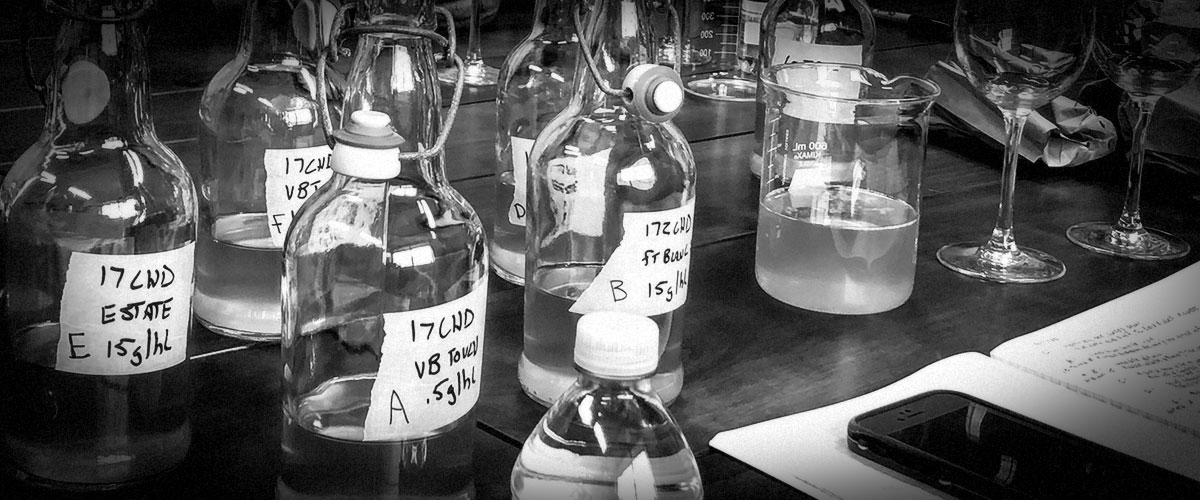by Kiley Evans, Winemaker
The pursuit of excellence drives our work at 2Hawk. In the winery this time of year, we’re focused on bottling. That means finishing our early-to-bottle white wines from the previous vintage—in this case, 2017—our middle-length barrel-aged reds from 2016, and our final red from 2015. The red wines were blended and returned to barrel over a year ago, so the aromas and flavors have integrated. They are ready for bottling.
The 2017 whites are another story. These wines were all stainless-steel-tank–fermented and aged. They are still quite primary in their aromas, flavors, and personalities, so we have experimented with various ways to improve these young wine’s flavors, textures, structures, and aesthetic profiles without impacting freshness and vivacity. One of the main ways we do this is through fining, which is a process of adding something to the wine that is insoluble (i.e., it doesn’t dissolve in the wine). We thoroughly mix the additive into the wine, and it attaches chemically to specific compounds in the wine. As the additive slowly settles to the bottom of the tank, it literally “pulls” those compounds out of the wine.
The real question is why do we remove these things from the wine? The biggest reason is these compounds can have a negative effect on aromatics and wine texture. By removing them, we promote fruitiness on the nose and smoothness and length on the palate. Fining a white wine to remove a small portion of a specific acid can significantly enhance mouthfeel, body, and texture as well as liberating bound aromatic compounds.
Some of the compounds we remove have no sensory impact at all but are wholly cosmetic. Have you ever found what looked like glass shards or tiny crystals in the bottom of your bottle of wine or your glass? Those are not glass—they are typically crystallized bitartrate. They have no impact on a wine’s aroma or flavor and are easily removed prior to bottling.
The interesting part of fining is we don’t always do it, and there is no universally applied agent. We set up trials with different fining agents at various levels and evaluate each one. Sometimes we find no benefit to fining. Sometimes we find the fining agent doesn’t do exactly what we want or expect. Sometimes we use more than one fining agent. Imagine putting a puzzle together. Eventually, you find the puzzle piece you’re holding doesn’t fit anywhere at the moment, so you put it aside until it’s needed. That’s the essence of wine fining. Knowing what doesn’t fit is as important as knowing what does fit.
At the end of the day, we want to put the best possible wine in the bottle. Nothing more, nothing less.

